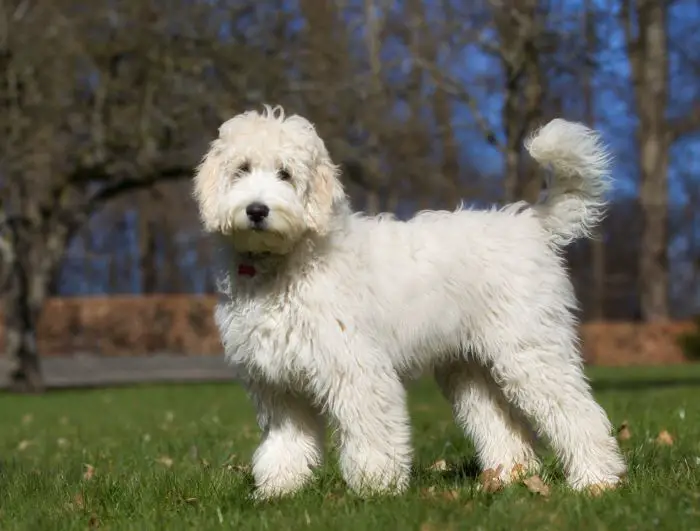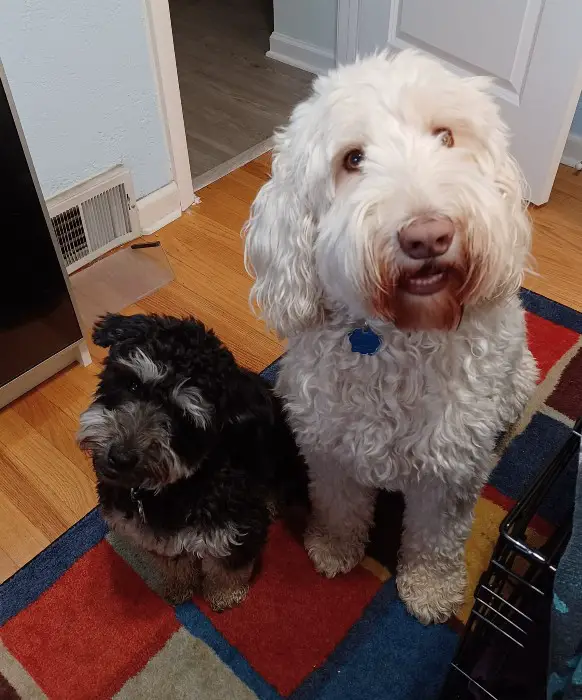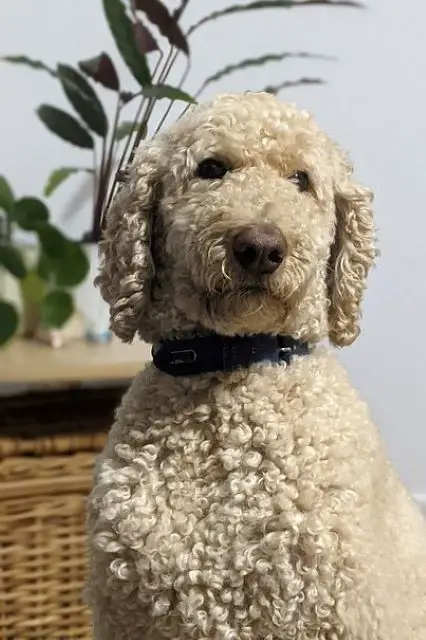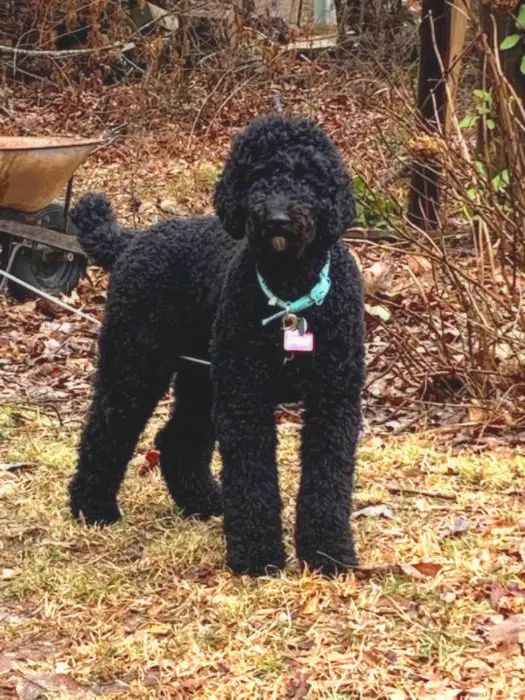Dogs can be great companions for adults and children alike. But, a surprising amount of people suffer from asthma and pet-related allergies. Poodle-hybrids, including the Labradoodle, do not shed much and are considered allergy friendly. But are Labradoodles hypoallergenic and do they shed? Read on to find out.

Labradoodles are not perfectly hypoallergenic. They still shed some and produce pet dander which many are allergic to. But, Labradoodles, especially those with wooly coats, shed much less than other dogs and produce far fewer allergens.
Let’s dive deeper into why the Labradoodle is more hypoallergenic than many other dogs. We’ll also briefly cover which coat types and generations are the lowest shedders. And how you can further reduce allergic reactions that you and your family may have towards your Labradoodle.
Relationship Between Shedding and Allergies
People often think they are allergic to pet fur because they have worse reactions when dogs shed a lot. But this is not true. Instead, a lot of people are allergic to the dead skin cells and saliva of dogs.
So why do you react more when dogs shed more?
There may be some saliva on their fur, whether it is because they have interacted with another dog or licked themselves. When they shed, they also lose a couple of skin cells. These skin cells are called dander and look a lot like dust.
So dogs that shed less will lose fewer skin cells and leave less saliva-covered fur around your home. This means that lower-shedding dogs are better for allergies.
But, because it is impossible to find a dog that never sheds hair or loses old skin cells, there is no such thing as a hypoallergenic dog. You will still experience some reactions.
Genetics of Labradoodle Shedding

Do Poodles Shed?
Poodles are great dogs in terms of shedding. Their single-layer-curly coats do not shed much, making them more hypoallergenic than other dogs. Some varieties of Poodles shed more than others. I have found that, as a general rule, the tighter the curls on their coat, the less they shed.
Do Labrador Retrievers Shed?
Labrador Retrievers are the exact opposite of Poodles with regard to shedding. They have double coats that shed a lot!
A lot of the time, the varieties that are used when creating Poodle-hybrids are bred to shed less, but even these are terrible for allergies.
Are Labradoodles Hypoallergenic?
As mentioned above, there is no such thing as a truly hypoallergenic dog. But Labradoodles can be far less allergenic than other dogs.
There are a variety of different factors to take into account, though. The more Labrador-like the coat of a Labradoodle, the more likely they will be to shed a lot. The more Poodle-like, the more hypoallergenic the Labradoodle will be.
This means some generations and coat types will be better for allergies than others.
Best Labradoodle Coat for Allergies

The most Poodle-like and hypoallergenic coat you will find on a Labradoodle is called a wooly coat, sometimes called a curly coat.
This incredibly curly, single-layer coat requires high maintenance to prevent matting. This coat will still shed, but it will be more similar to how a human’s hair sheds. Keep in mind that these Labradoodles may still cause allergic reactions.
It is impossible to tell whether your Labradoodle puppy will end up with a curly coat just by looking at it. So if you are purchasing a puppy, ask your breeder about the coats of the parents. Identifying it in an older dog you are adopting is very easy.
Low Shed Labradoodle Generations

Genetics can be the luck of the draw in some cases, in others, the breeder can carefully plan it. Backcrossing with Poodles, especially those with particularly curly coats, makes an increasingly hypoallergenic coat appear more regularly.
This means that F1b generations are a far better option for those with allergies than a first-generation Labradoodle. Similarly, F1bb Labradoodles are even better.
But a few puppies in a litter may exhibit more Labrador Retriever characteristics when it comes to fur. So make sure that you ask your breeder’s advice.
Improve Pet-Related Allergies
Now that you understand which Labradoodle may be the best option, let’s look at some things you can do to further prevent allergic reactions.
Regular Grooming
Grooming your Labradoodle regularly will remove any loose hair that is present in its coat, as well as any dead skin cells. Additionally, any dust that has been stored in the coat and against your Labradoodle’s skin will be washed away.
Many people like to give their Labradoodles quite a close cut. Although this is unnecessary if you do not like how it looks, it can help if you have allergies, as the hair will store less dirt and animal saliva. It also makes maintaining your Labradoodle’s coat at home a breeze.
Avoid Using Carpets or Rugs
Carpeted flooring or rugs can grab onto pet dander and hair. Even with regular cleaning, it is more than likely that you will never be able to get all the allergens out. Instead, opt for wood, tile, or laminate flooring that can be easily vacuumed and mopped.
A rug may be fine in the bedroom of someone with no pet allergies, but try to keep them out of common areas.
Use an Air Filter
Above, I mentioned that pet dander looks a lot like dust. It acts like it too. Your skin cells, and those of your Labradoodle, will float around in the air. This means that it has the chance to be breathed in by those allergic to it.
Try using a HEPA air filter to pull as much of it out of the air as possible.
Restrict Furniture and Bedroom Access
Although it isn’t pleasant, if someone in your house truly struggles with pet allergies, it might be best to restrict your Labradoodle’s movements. Discourage your Labradoodle from sitting on your couch or bed, and try to keep them out of the necessary bedrooms.
If you struggle with a Labradoodle that climbs all over your furniture, try covering the items in a blanket that can be removed and washed. But if you can avoid pet hair and dander on certain items and in certain rooms entirely, it is always the best option.
Related Reading:
